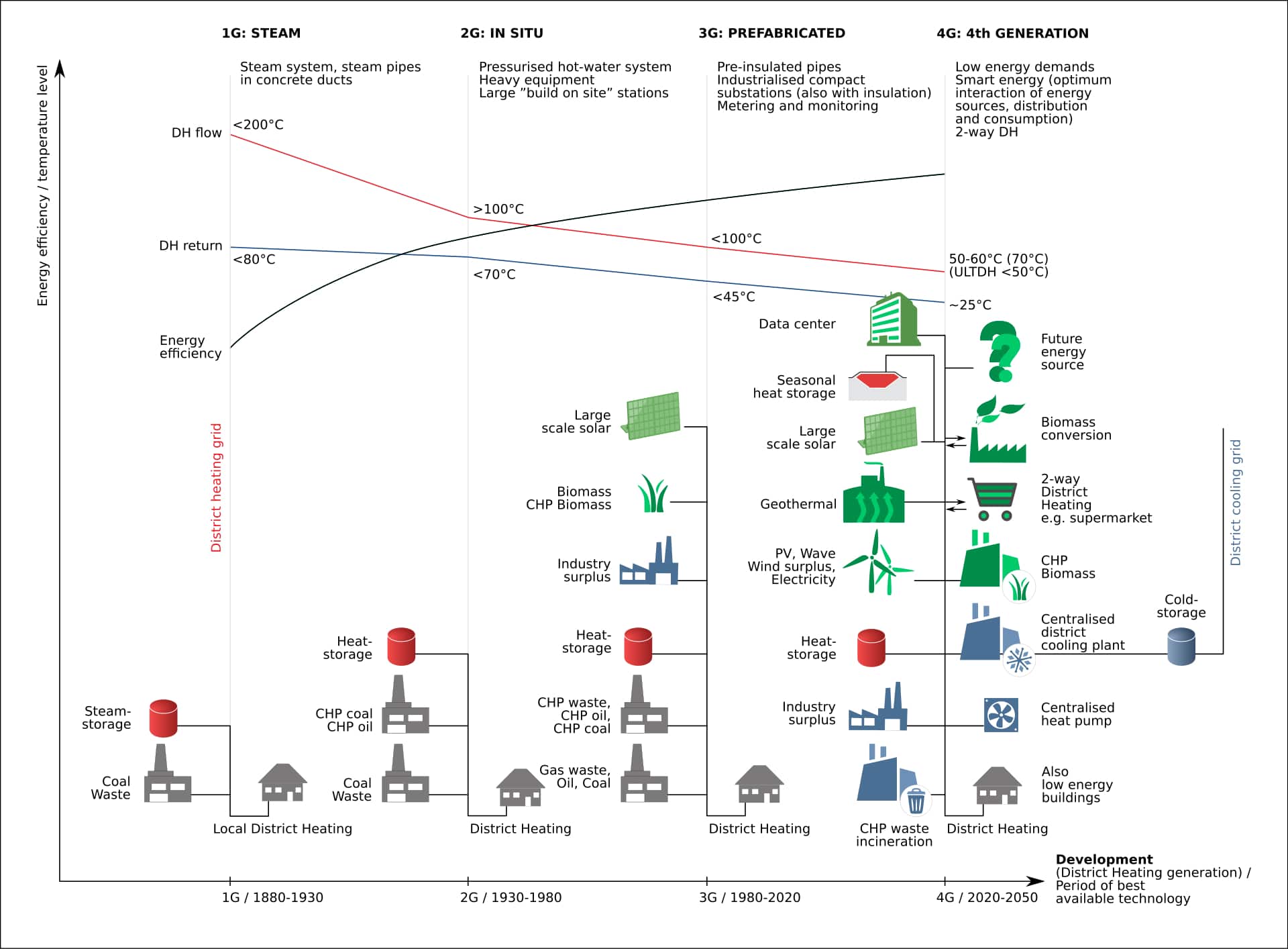Different generations of DHC
Previous generations of DHC
District heating exists since the Roman Empire, the use of geothermal source to provide heat for dwellings was first conceived by the villagers of Chaudes-Aigues in France in 1332. The first economically successful district heating was launched in the US in 1877.
Since then, heat networks have evolved with the development of new energy sources and new technologies:
Evolution of district heating and cooling generations (source Wikipedia)
1st generation
The first generation of district heating were born in the US in the 1880s, the main characteristics of this generation are the following:
- They were coal and waste fueled
- They used high temperature steam as a heat carrier
- They were built around a centralized production unit
- The transport and distribution were usually concrete ducts
- They were state of the art until the 1930, despite being now technologically outdated, some of these systems are still in use in the world.
2nd generation
The second generation of district appeared in the 1930s, the main characteristics of this generation are the following:
- Were coal, waste and oil fueled
- Used pressurized hot water as heat carrier with temperatures above 100°C
- Were built around a centralized production unit
- Introduced Combined Heat and Power (CHP) to save primary energy use.
3rd generation
The third generation in district heating was developed in the 1970s after the two oil crisis the led to oil shortage. This generation rapidly spread all around the world, the main characteristics of this generation are:
- Prefabricated and pre-insulated pipes
- Operation temperatures below 100°C
- Used coal, biomass and waste as energy sources, and some systems used geothermal energy and solar energy
4th generation
The fourth generation in district heating is currently developed, they are a way to address climate change as :
- They integrate high shares of variable renewable energy
- They supply low temperature district heating for space heating and domestic hot water (below 70°C)
- They distribute heat with low grid losses
- They recycle heat from low temperature renewable energy sources
5th Generation of District Heating and Cooling
The fifth generation of district heating distributes heat at near ambient ground temperatures, minimizing grid losses and thus, insulation needs. The main design characteristics are:
- Bi-directional exchange of thermal energy: supply of heat means receiving cold and vice versa
- Thermal storage at large and small scale, appropriately places, are integrated with the thermal system to balance the demand for heat and cold
- Demand driven algorithm-based control that optimizes the exergy flows using real-time data and monitoring

